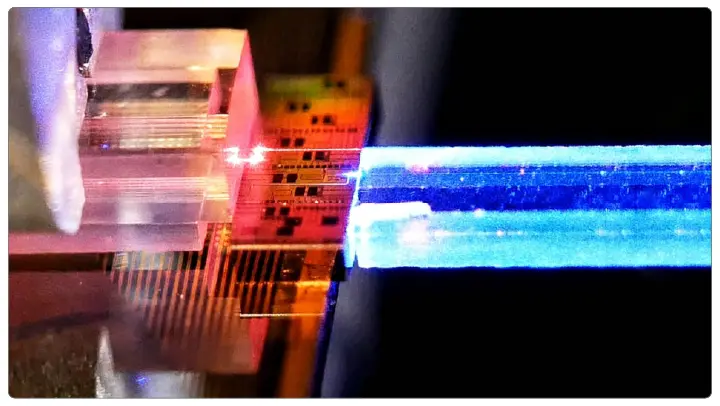Researchers Create 11-Mile Quantum Network Using Photons
In a new paper published in Optica Quantum, the team introduces the Rochester Quantum Network (RoQNET). This network is capable of transmitting massive data using a single photon, a type of light particle, over an 11-mile fiber-optic cable with an optical wavelength at room temperature, which is the normal temperature of the surrounding areas. It shows that, for this quantum network, we do not need to build different complex setups that require managing relative temperature, which is a key aspect of this experiment that sheds light on how the commercialization of such quantum networks is possible in the near future.

Quantum communication networks hold high potential to enhance the security of data transmission in a way that makes it impossible to interrupt or copy transmitted messages without detection. Such systems depend on quantum bits, which can be built by using atoms, imperfections in diamond-like materials, and superconductors. However, light particles, such as photons, are the most useful qubits for long-distance quantum communication.
In acknowledging this, researchers from the Rochester Institute of Technology and the University of Rochester have performed experiments and built experimental quantum communication networks, linking their campuses with the help of optical fibers.
One of the significant advantages of photons over other quantum bits is that, theoretically, photons can travel through fiber optic cables or telecommunication lines. Various qubit types can be used to build quantum ecosystems in the near future, thanks to successful experiments that have yielded remarkable outputs, such as quantum dots and trapped ions, which offer the qubits required for such networks. However, photons remain the most attractive qubits among these other sourced qubits.
A professor of optical physics - Marie.c. Wilson, Joseph Wilson, and Nikolas Vamivakas mentioned, “This is an exciting step in creating quantum networks that would protect communications and empower new approaches to distributed computing and imaging,” he further added while praising the quantum structure they made. “While other groups have developed experimental quantum networks, RoQNET is unique in its use of integrated quantum photonic chips for quantum light generation and solid-state based quantum memory nodes.”
Ultimately, this experiment aims to connect the Rochester quantum network to other research institutions across New York State, including Brookhaven National Laboratory, Stony Brook University, New York University, and the Air Force Research Laboratory.